Community gathers to celebrate international acclaim for Warby-Ovens National Park
Monday 10 October, 2022
From its ecological diversity to its rich cultural heritage and abundance of adventure activities, Warby-Ovens National Park has long been the gem of Victoria for north east locals.
Located between the Victorian Alps and Murray Valley on Yorta Yorta Country, it protects three distinct landscapes – the granite hills and woodlands of the Warby Range, the Box‐Ironbark forest of Killawarra, and the River Red Gum forests and wetlands of the heritage-listed lower Ovens River.
These areas of Box-Ironbark and Riverine forest and woodlands are some of the best examples of this habitat in Victoria, following large-scale clearance of this vegetation post European settlement.
Just over a year ago in August of 2021, the national park hit global status, becoming the first site in Victoria and only the fourth in Australia admitted to the prestigious International Union for Conservation of Nature’s (IUCN) Green List of Protected and Conserved Areas.
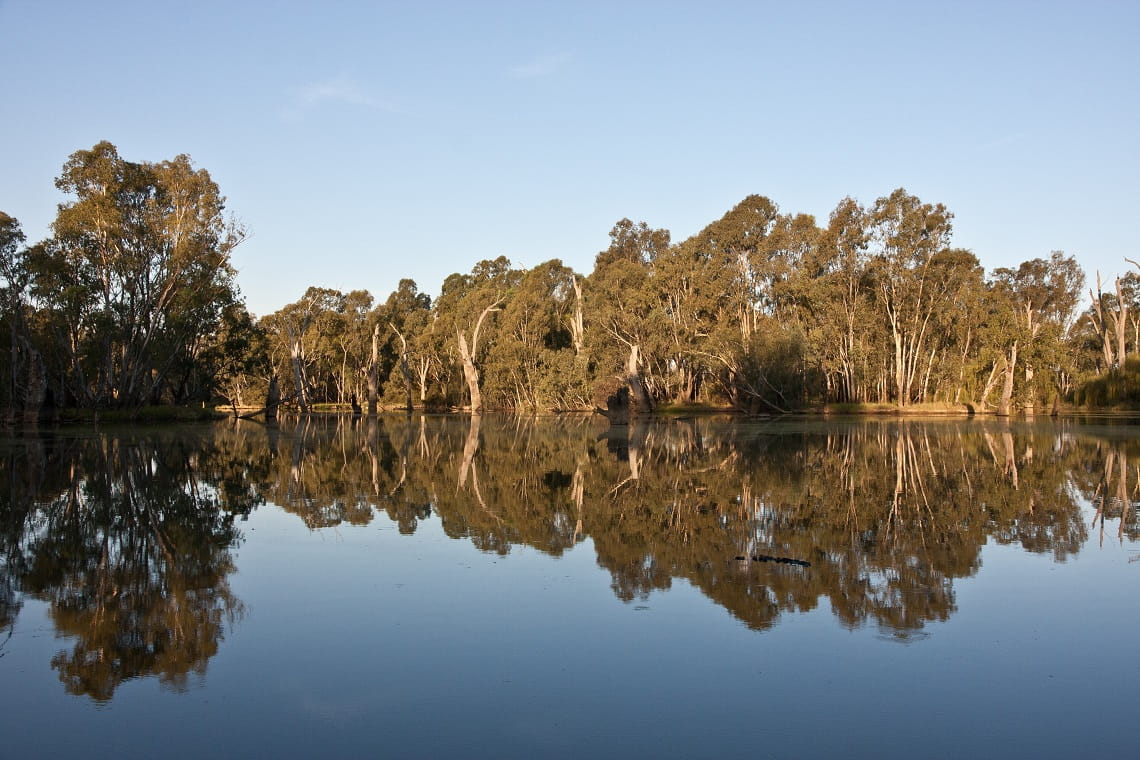 Lower-Ovens reflections, credit – Parks Victoria
Lower-Ovens reflections, credit – Parks Victoria
This achievement recognises the Warby-Ovens National Park as one the best-managed sites internationally, and, for Parks Victoria, acknowledges the commitment and passion staff have for safeguarding its natural values.
After delays to celebrations due to the impacts of COVID-19, Parks Victoria staff and the Wangaratta community, along with Traditional Owners and partners, were finally able to gather at Wenhams Camp for a long-anticipated day of festivities, comradery and learning.
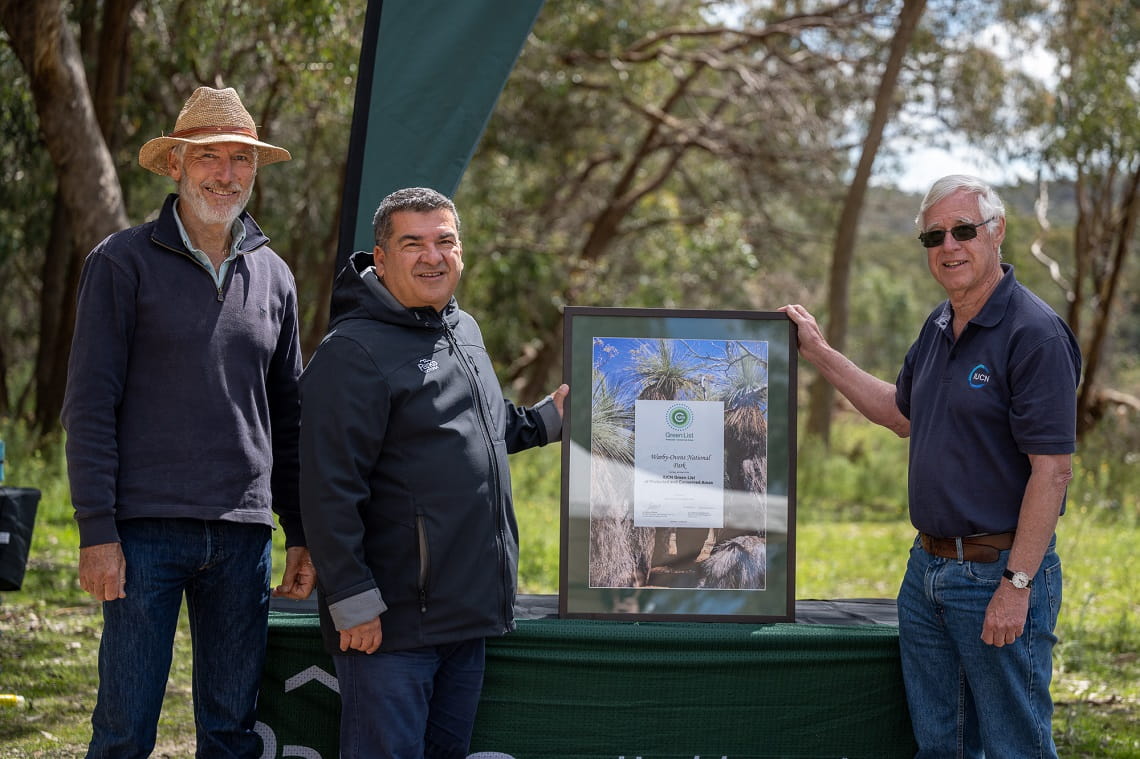 IUCN Vice President Peter Cochrane (left) and Vice-Chair (Science) with the IUCN World Commission on Protected Areas Marc Hockings present the IUCN Green List certificate to Parks Victoria Chair John Pandazopoulos (centre) – credit, Parks Victoria
IUCN Vice President Peter Cochrane (left) and Vice-Chair (Science) with the IUCN World Commission on Protected Areas Marc Hockings present the IUCN Green List certificate to Parks Victoria Chair John Pandazopoulos (centre) – credit, Parks Victoria
“It’s wonderful to see such a diverse group of people, all with the same goal in mind, putting so much care, love and hard work toward this special place,” Dr Mark Norman, Parks Victoria’s Chief Scientist for Conservation and Climate Action, said.
“The Warby Ranges are truly beautiful, supporting a wide range of habitats and plants, such as spectacular giant Grass-trees that are hundreds of years old.”
“Receiving this level of recognition from the International Union for Conservation of Nature is very exciting. Full credit goes to all the people involved and their hard work to protect and promote the natural and cultural values of this amazing place. Parks Victoria will continue to seek and meet best practice, world standards to help nature and care for Country in challenging times."
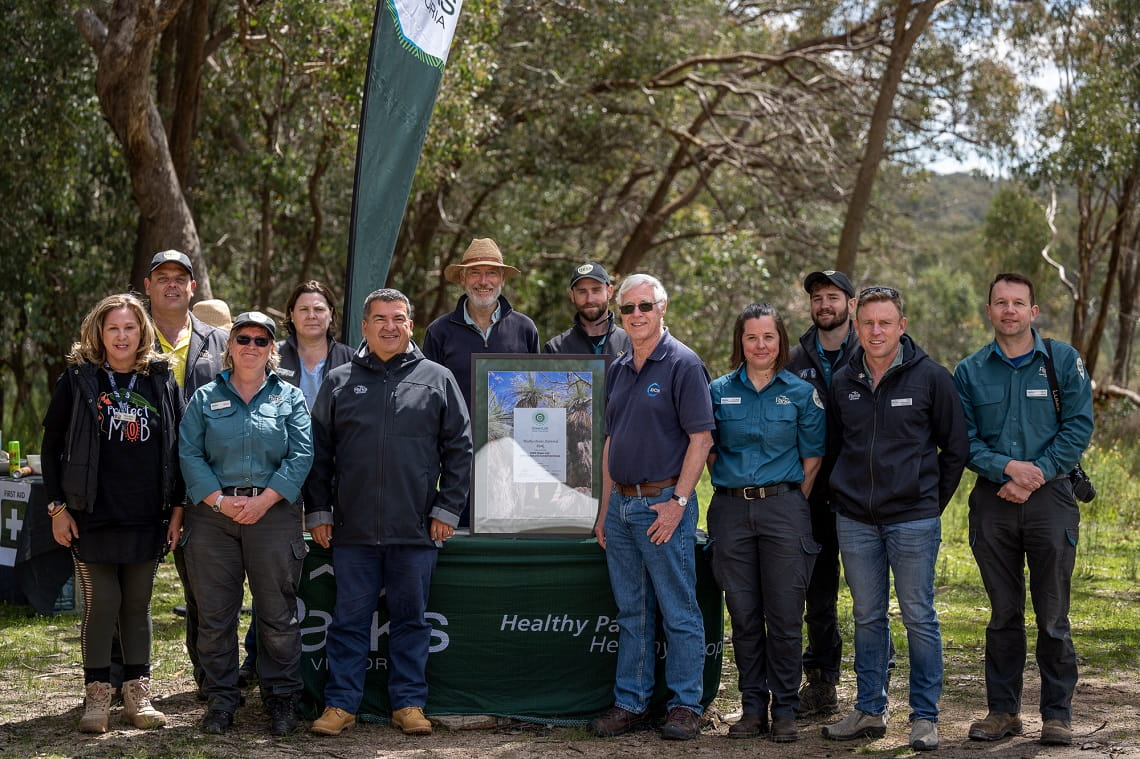 From left to right: Nicole James, Kris Hermans, Sharon Plummer, Charlie Bisset, John Pandazopoulos, Peter Cochrane, Jhye Rosicka, Marc Hockings, Jessica Reid, Kagan Vainisi, Daniel Mclaughlin and Mark Antos – credit, Parks Victoria
From left to right: Nicole James, Kris Hermans, Sharon Plummer, Charlie Bisset, John Pandazopoulos, Peter Cochrane, Jhye Rosicka, Marc Hockings, Jessica Reid, Kagan Vainisi, Daniel Mclaughlin and Mark Antos – credit, Parks Victoria
Following rejuvenating winter rains, visitors taking part in guided activities were greeted by refreshed vegetation, the sound of flowing creeks and waterfalls, and an unforgettable cacophony of birdsong shared lazily throughout the day. From a detective search for wildlife with our Junior Rangers crew to a mindfulness walk amongst colourful wildflowers with the Warby Range Bushwalkers and birdwatching games with Swamps, Rivers and Ranges, there were a variety of opportunities to delve deeper into the park and connect with nature.
The Rotary Club of Milawa-Oxley, with their delicious arrangement of food and treats, also kept everyone fed while the Friends of Warby Ovens National Park, Goulburn Broken Catchment Management Authority and North East Catchment Management Authority shared their knowledge, history and planned actions for the park.
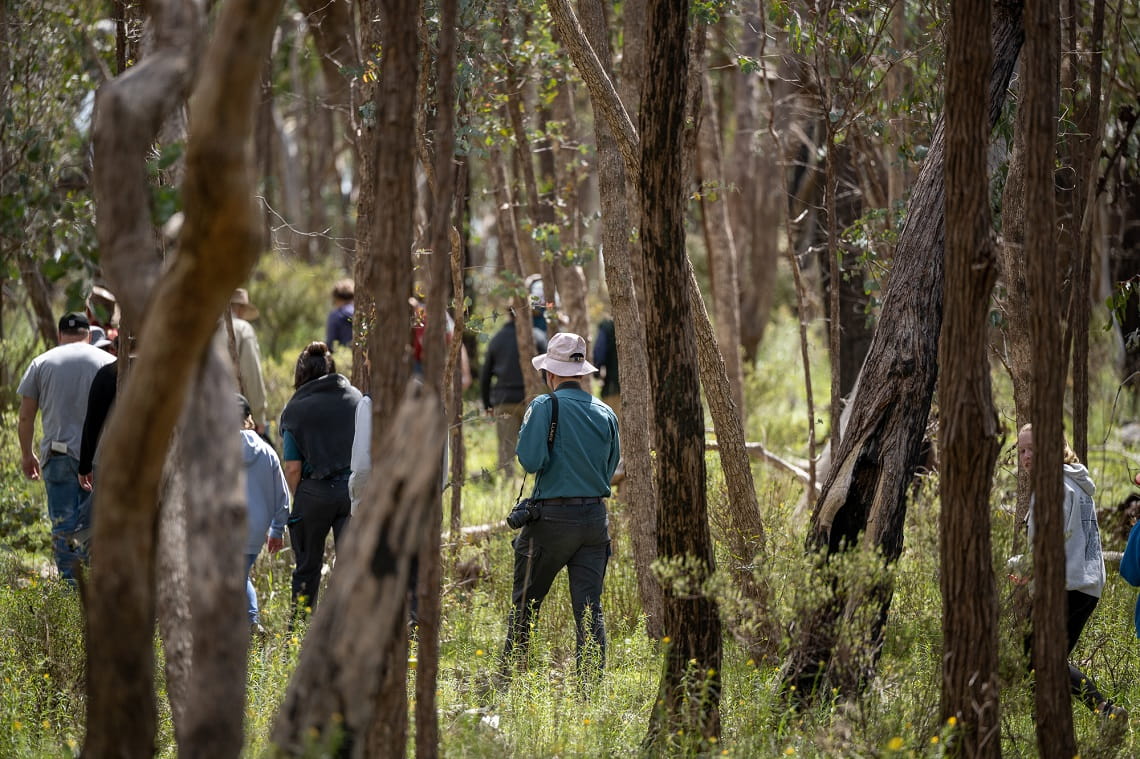 Wildflower walk through Warby Ovens National Park, credit – Parks Victoria
Wildflower walk through Warby Ovens National Park, credit – Parks Victoria
Warby-Ovens National Park provides a sanctuary for hundreds of native plant and animal species that call it home, like the migratory Swift Parrot and the endangered Carpet Python.
It is also a haven for nature lovers due to the wide range of recreational, educational and social opportunities on offer – including bushwalking, birdwatching, cycling, camping and canoeing.
The protection and preservation of these values is built on the legacy of the park’s history of conservation and its engaged local community. Parks Victoria applies an adaptive management plan to safeguard the park’s future, developed with input from Traditional Owners, stakeholders and the community. The continuation of this collaborative support occurs through the Warby-Ovens National Park Advisory Group, established in 2019.
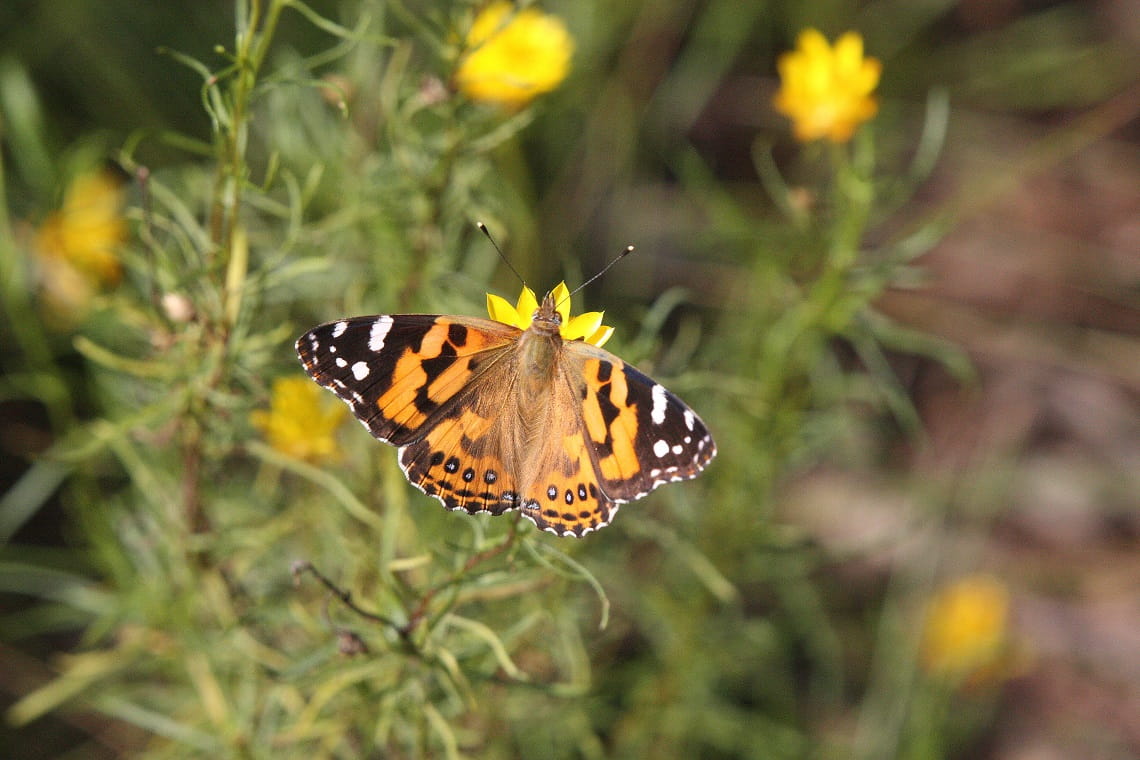 Painted Lady at Killawarra Forest in Warby-Ovens National Park – credit, Parks Victoria
Painted Lady at Killawarra Forest in Warby-Ovens National Park – credit, Parks Victoria
Parks Victoria’s long-term management actions include pest plant and animal control; maintaining and upgrading existing visitor facilities, as well as planning for new visitor experiences; undertaking compliance activities, including patrols; monitoring of nature with citizen scientists; supporting activities of partner agencies; working with Traditional Owners and improving engagement with stakeholders and the community; and finally, continued management of existing infrastructure and assets.
Kelly Raymond, Parks Victoria Program Leader for Parks Evaluation, who led the two and a half year-long nomination process, feels “incredibly proud and humbled that Warby-Ovens National Park is now recognised among the best managed parks in the world.”
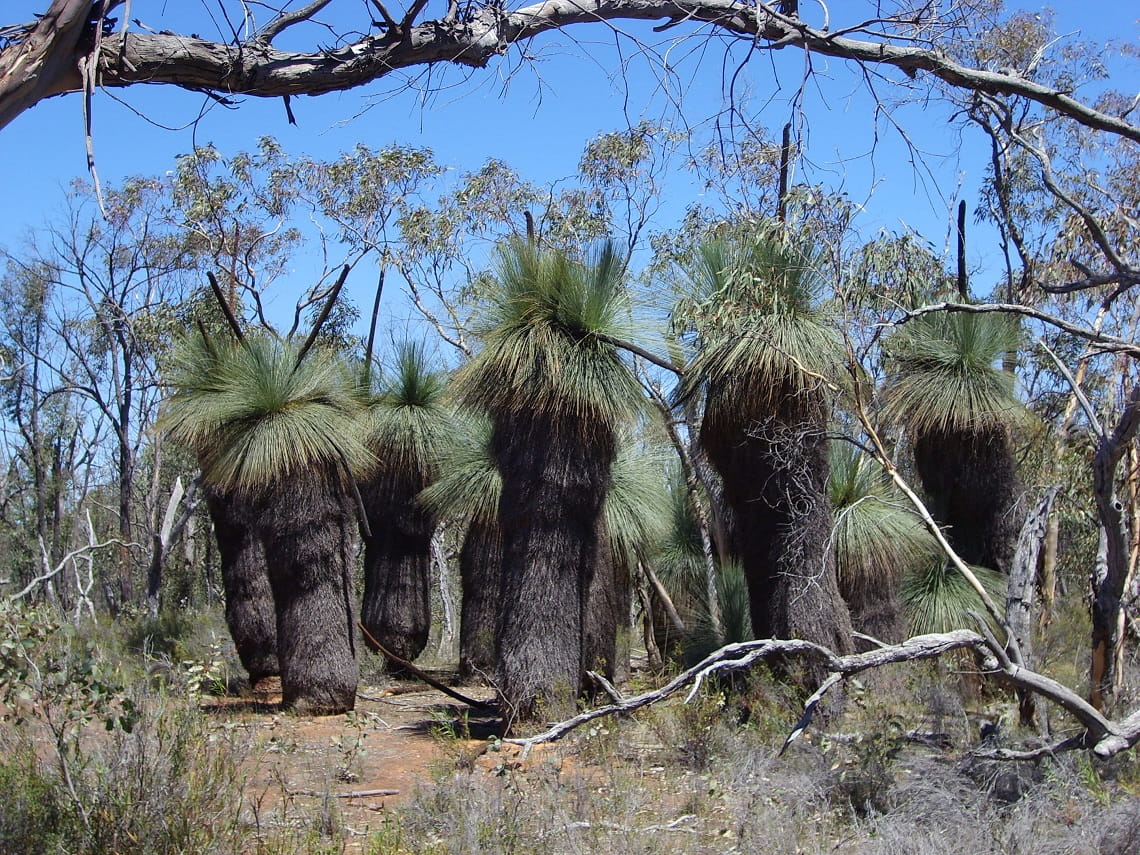 Grass-tress (Xanthorrhoea) at Warby Ovens National Park, credit – Parks Victoria
Grass-tress (Xanthorrhoea) at Warby Ovens National Park, credit – Parks Victoria
Andy Kimber and Ian Minns are local Wangaratta residents with a strong interest in the restoration ecology of the Warby-Ovens National Park. Both are members of the Advisory Group and, most recently, instigated the Friends of the Warby-Ovens National Park group.
“The distinct ecosystems of Warby-Ovens National Park have faced many challenges since European colonisation. As land usage and conservation status changed, we have been very fortunate to have these ecosystems surviving relatively intact. Although many management challenges exist, the team from Parks Victoria and various volunteer conservation groups are working towards positive outcomes,” Andy and Ian said.
“As Wangaratta residents, having the park in close proximity, the Green List highlights the prominence of the Warby-Ovens National Park in international conservation standing. Locals are very proud to acknowledge the work of policy makers and conservationists over the past few decades. For many community members, the park provides a closer connection to Country.”
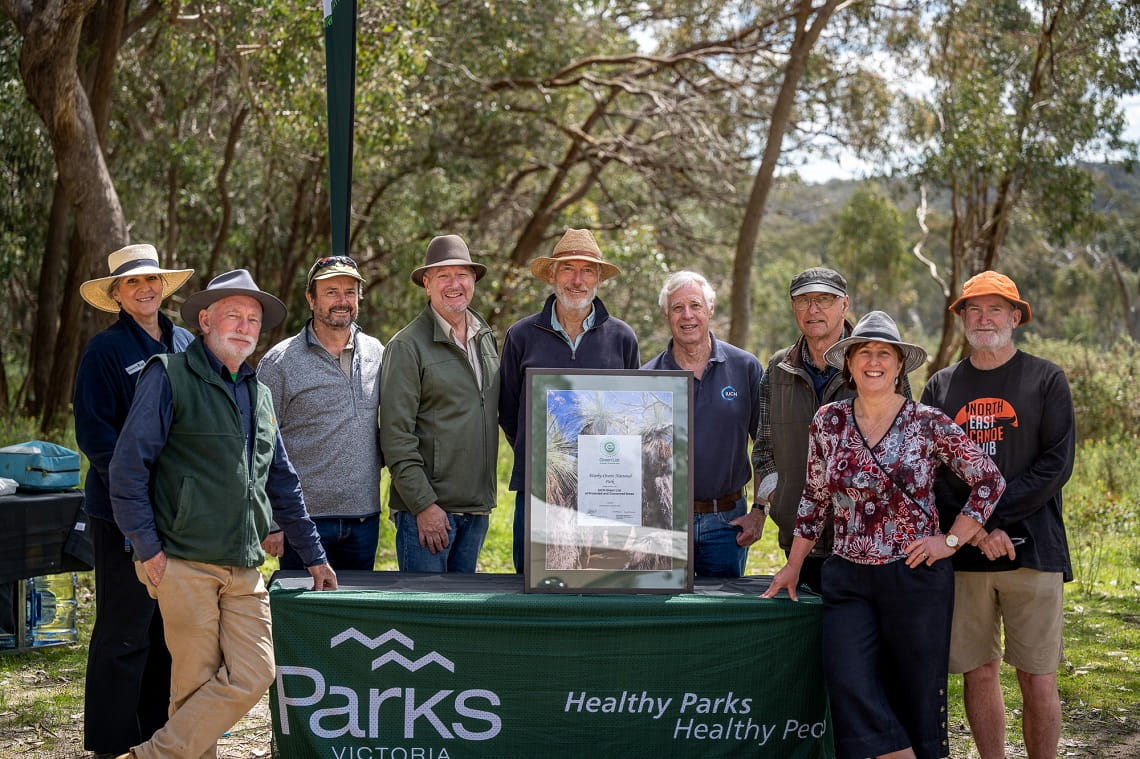 From left to right: Janice Mentiplay- Smith, Andy Kimber, Jamie Kaye, Rob Humphrey, Peter Cochrane, Marc Hockings, Geoff Barrow, Sheree McKenzie (former Advisory Group Chair) and Ian Minns, credit – Parks Victoria.
From left to right: Janice Mentiplay- Smith, Andy Kimber, Jamie Kaye, Rob Humphrey, Peter Cochrane, Marc Hockings, Geoff Barrow, Sheree McKenzie (former Advisory Group Chair) and Ian Minns, credit – Parks Victoria.
“But acquiring a Green Listing also creates a challenge, especially when management strategies require climate change adaption and planning to further biodiversity success. This challenge has inspired locals to form a Friends of the Warby-Ovens National Park group and develop a website to engage park users at many levels.”
“We are hoping that many more people will get involved with our park, whether it be by participating in Friends group activities such as photography; flora and fauna monitoring; weeding and revegetation working bees; citizen science projects and educational programs; or through our discussions online, we can have a positive impact on our now internationally recognised park.”

